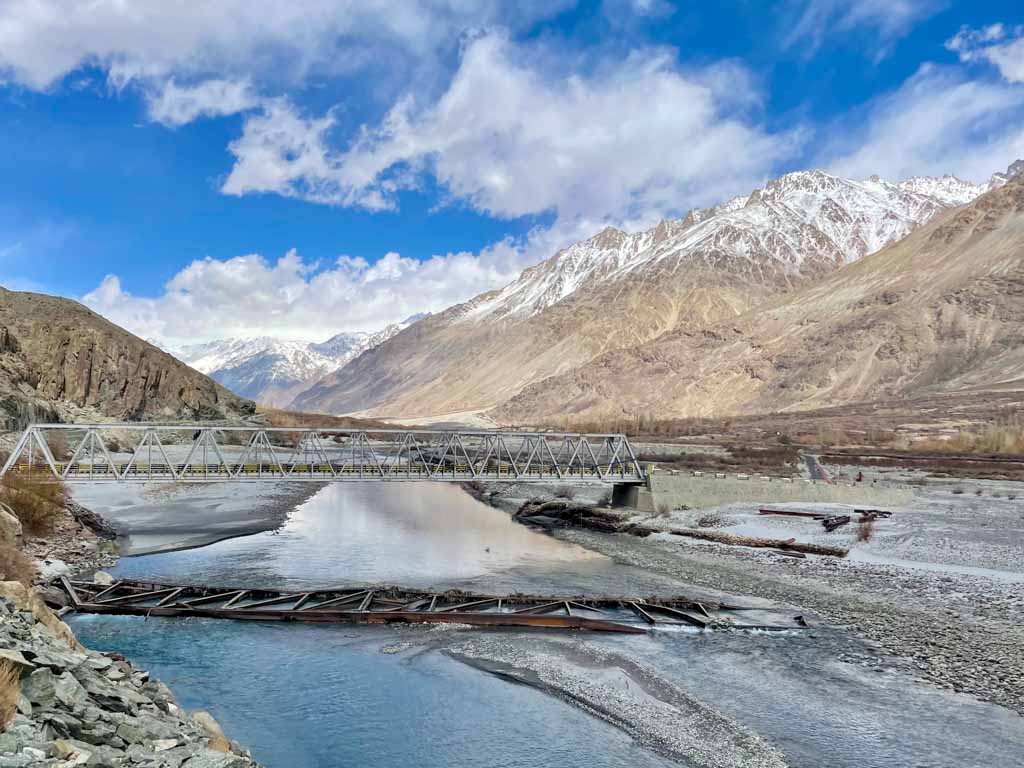Hidden for several years under the sands of time, the village of Murgi is a treasure of Nubra valley in Ladakh, India, waiting to be explored by the external world. Jigmet Namgyal mentions that the village was originally named mHul-re (The Silver Mountain) and over the years the name transformed into the modern village of Murgi.
Murgi village, home to several families like that of Jigmet was washed away by flash floods few generations back and only a small number of families remained to tell the tale.
Jigmet Namgyal, a former army soldier, served at several strategic sites across Ladakh for 18 long years and has now taken retirement to become a homestay host. Well informed about the local heritage Namgyal loves to take his guests on a journey about the history of his region and share stories of the highest frontiers of the world.
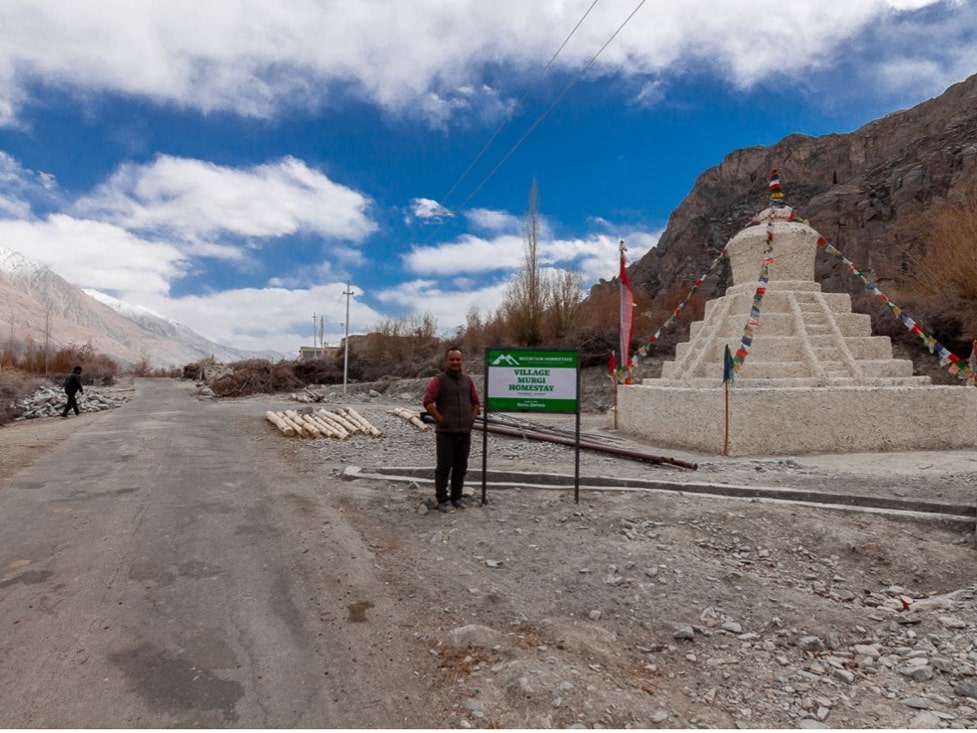

In the first leg of the journey, he takes us to the rock art site of Murgi Tokpo. The largest petroglyph site (a rock art site) found to date, in Ladakh. Namgyal recalls how they played with rock art pieces as ordinary stones in his childhood days and did not understand their significance or the story hidden within the rocks. Several rocks in the region date back as old as 1500 years. The art in the village resembles that found in Central Asia and Persia pointing towards an ancient trade route linked closely to different parts of the world. Today, the villagers recognize the historical value and heritage hidden in their region and are making efforts to preserve the history along with the local government. “
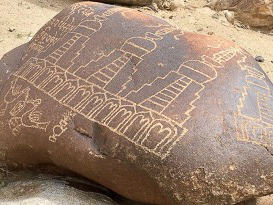

The villagers have named the petroglyph site as ‘rdo nag’, literally meaning ‘black rocks’, as it is formed out of boulders covered with a red-brown crust says Namgyal.
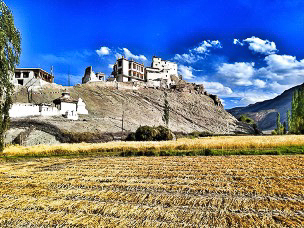

Pointing southwards of village Murgi, the homestay host reveals another hidden treasure of the Nubra valley, the Charasa palace. He mentions during his school days they often used to visit the area and be inspired by the tales of King Nyima Namgyal of the Kingdom of Ladakh. The palace was built as the winter capital of the kingdom in the olden days.
Several feet below Leh, the region provided a relatively warm environment and facilitated easy trade due to the proximity of the silk route. According to the locals, the palace is believed to be founded as a Monastery by Sherab Zangpo – the tutor to the first Dalai Lama. There is also a standing monastery (Hayagriva – A deity in the Mahayana Buddhism sect) alongside the castle further establishing the claims of the religious origin of the fort.
Namgyal and the other villagers believe that the monastery will become an important site of worship and tourism in the coming years.
As the host talks more about his village, he takes us towards a small tomb wherein you can find a footprint of Guru Dachompa Nyima Gungpa. According to the local tradition, the monk was able to fly by using his garments and wanted to construct the “Lhasa Gonpa” at Ensa (A famous 600-year-old gompa near Murgi village) but was denied by the locals. In anger, he left towards Tibet and left his footmark at Murgi village. As per the historians, no tool or instrument was used to carve the footprint.
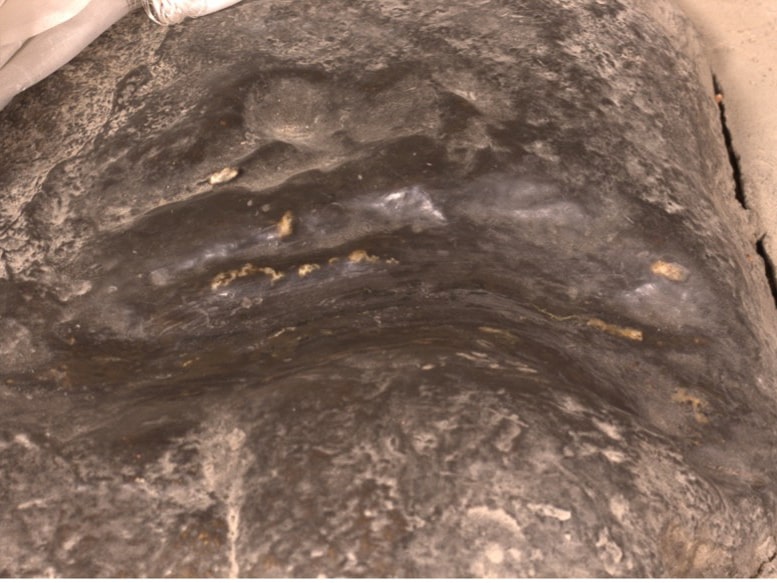

Mr Namgyal mentions apart from the historical sites the village has several natural features which the tourists would love to explore. The Murgi village is identified by several waterfalls and unique rock structures earning it a reputation of the village of treasure. As one digs deeper into the mountains, one can find unique minerals and rocks hidden within the ranges.
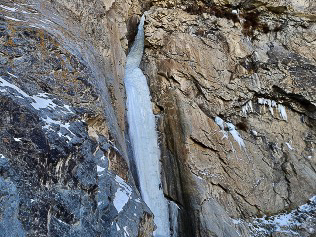

Mountain Homestays has been working to bring out the stories of several such initiatives and the richness of the cultures they seek to preserve. We are building a platform for these communities to showcase their tourism potential and offerings to travelers from all over the globe.
To explore charming community tourism initiatives in Vietnam, Cambodia, Kenya, Kyrgyzstan, and in the Indian regions of Ladakh and Meghalaya, visit mountainhomestays.com.

